
Workplace Fire Safety - What You Need to Know to Pass an Inspection
Everything you ever wanted to know about fire safety
Fire safety is important to every business. Seton offers expert advice to give you guidance and support when it comes to all aspects of fire safety in the workplace. With the information provided here, you will be able to ensure the safety of your employees in the event of fire emergencies. Being prepared saves lives.
Fire Safety: Helping you to make your workplace safer
The majority of fires are preventable and it’s within your power to follow simple steps to prevent fires from starting in the first place. Fire safety regulations exist to save lives. The Regulatory Reform (Fire Safety) Order 2005 was created to ensure that business owners and operators follow fire safety legislation that keep employees, tenants, customers and colleagues, working and living in their premises safe in the event of fire emergencies. Learn more about fire safety legislation and its importance in the workplace.
It’s an unfortunate reality that 90% of businesses never completely recover from a major crisis (Association of British Insurers, 2003) such as a catastrophic fire. Fire safety regulations in the workplace offer excellent guidance and are a good place to begin, but should be viewed as only a starting point. Complying with the regulations is the bare minimum that you can do, so and it is best to maximise your preparation. Discover the legal responsibilities that employers must consider when it comes to fire safety legislation.
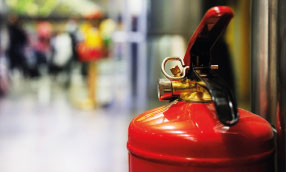
GUIDE TO FIRE SAFETY LEGISLATION
Given the high number of people in public places, it's no suprise that accidents requiring first aid treatment are common.
More Info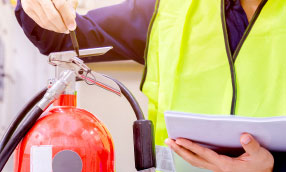
GUIDE TO FIRE RISK ASSESSMENT
Accidents can occur in office environments and it's important that you can adequately tend to employee injuries.
More Info
GUIDE TO FIRE PRECAUTION
It's no suprise that outdoor work environments can pose some of the biggest risks to your employees.
More Info
GUIDE TO EMERGENCY ACTION & EVACUATION
Your responsibilities don't stop at the minimum level requirements.
More InfoFire Safety: Workplace regulations and best practices
In the UK, there were 167,000 fires in 2018. The fire safety management of your premises needs to be ongoing and monitored regularly in order to ensure the safety of your business and employees.
So what is required of you to comply with these regulations? One of the best ways for a business is to train employees in fire safety awareness, giving them the tools and skills necessary to deal with fires, should they occur. You should provide emergency evacuation and planning details, identify risks and fire hazards that could be present in the workplace. Check out our comprehensive guide for best practice when planning your escape routes at work.

-

Seton AFFF Fire Extinguisher
From £33.99 To £53.83Supplied in: Single -
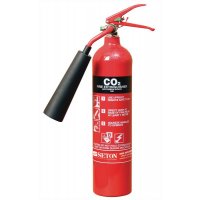 Promotion
Promotion
Seton CO2 Fire Extinguishers
From £52.99 To £89.99
From £50.52 To £89.99
Supplied in: Single -
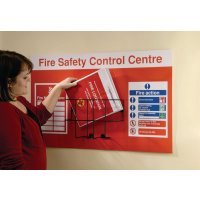
Fire Safety Control Centre
£117.89Supplied in: Single -

Fire Safety Centres - Information Station
£92.69Supplied in: Single -
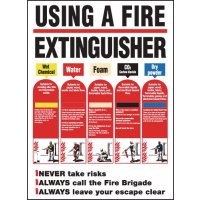 Promotion
Promotion
Fire Extinguisher Posters & Pocket Guides
From £35.86 To £51.24
From £30.44 To £43.49
Supplied in: Single -

Know Your Fire Extinguisher Colour Code Wallchart
£23.99Supplied in: Single -
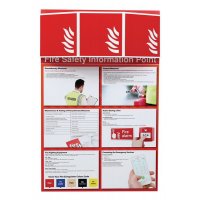
Fire Safety Information and Guidelines Point
£62.99Supplied in: Single
Fire Risk Assessment: The importance of the 'Responsible Person'
The Regulatory Reform (Fire Safety) Order 2005 came into force on the 1st October 2006. This regulation amends or replaces 188 pieces of legislation, the most significant of which is the Fire Precautions Act 1971 and the Fire Precautions Regulations 1999. The main update to these legislation's, is that the responsibility of Fire Safety on the employer, or the nominated ‘responsible person’. Only a person who has some level of control for the premises can hold the role, and they must take reasonable steps to reduce the risk from fire, and ensure people can safely escape in the event of a fire.
To keep people safe from fire, discover all the key components to create your fire risk assessment with our 29 minute expert guide. This is a comprehensive, easy-to-read guide that includes information on everything you need to carry out an effective fire risk assessment and avoid fines, plus a handy downloadable template to get started now.
The Fire Risk Assessment is carried out by the responsible person. It is the process of assessing the premises for fire risks, and taking steps to mitigate those risks. There are five steps in total, and recording the process is just as important as undertaking the assessment itself.
During your Fire Risk Assessment, you may wish to review the evacuation plans and routes. As discussed later in this article, evacuation planning is a legal responsibility of every company/premises owner. To provide the safest possible route, you may wish to consider utilising a Safety Way Guidance System

Fire Prevention: What can you do to protect your business from fire?
When it comes to fire safety, the best way to fight a fire is to prevent it from happening in the first place. This article has already discussed the importance of a Fire Risk Assessment, however there are a great number of tools you can use to keep your premises and employees safe from fires.
You are legally required to have a fire-detection and warning system in place. This applies not only to businesses but also for landlords. The important thing to consider when choosing your detection and warning system is to ensure that it is capable of warning people in all fire-related circumstances. For example, if you are in a loud environment where your employees will be wearing noise protection, you may wish to consider an alarm with a strobe light alert as well as a traditional alarm.
We have created the Ultimate Fire Alarm Buyers Cheat Sheet, a resource that details everything you will need to create a complete fire alarm system at your work or home residence. This comprehensive guide includes information on the legislation surrounding fire alarms in the UK, how to correctly install and maintain fire alarms of your choice and the importance of regular fire alarm inspections. Find out the best fire alarms for your business today.

-
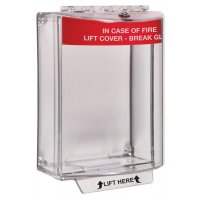
Red Alarmed Call Point Covers With Screw Fixing
From £53.19 To £114.59Supplied in: Single -

Intumescent Door Seals - Fire & Smoke
From £2.79 To £3.99Supplied in: Single -

Flat Pack Fire Blankets
From £14.59 To £25.29Supplied in: Single -
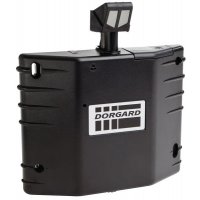 Promotion
Promotion
Dorgard™ Fire Door Retainer
From £99.99 To £104.99
£99.99
Supplied in: Single -
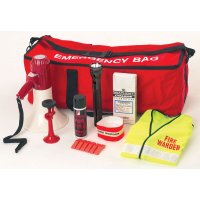
Fire Warden Kit
£163.99Supplied in: Single kit
Emergency Action and Evacuation: What are your legal requirements
Your responsibilities don’t stop at the minimum legal requirements, instead you should be looking for additional methods to ensure the best possible result should the worst happen. For example, planning an evacuation route is a necessity as is the need for Fire Exit signs. Taking this a step further would be to use photoluminescent tape to mark the floor to ensure that the route is visible, even if the room is obscured by smoke.
You should also have a method of fighting small fires available. This can help stop fires from spreading and causing damage. As a rule of thumb, there should be a fire extinguisher provided for every 200 metres (m2) of floor space, with at least one on each floor. Using your Fire Risk Assessment you should be able to identify the type of fire most likely to occur in your workspace, and therefore the most appropriate fire extinguisher to use. For example, if you worked in a lab with chemicals, you would need either a foam or dry powder extinguisher dependent on whether there was a chance of there being live electrical equipment in the area. Alternatively a kitchen would need a wet chemical extinguisher, or a fire blanket.
Finally, Fire Wardens will be a valuable resource should a fire break out. They will be able to evacuate your employees and are trained to know what to do in different circumstances. According to the Regulatory Reform (Fire Safety) Order 2005 Fire Wardens must be provided with training, and equipment with which to perform their duties in emergencies.

-
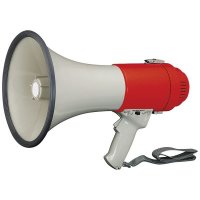
Megaphones
From £73.69 To £109.29Supplied in: Single -
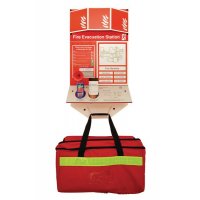
Fire Evacuation Stations
From £127.99 To £332.29Supplied in: Single -
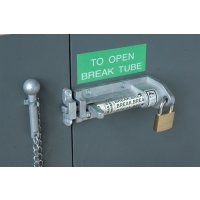
Panic Bolt Unit
£29.99Supplied in: Single -

Air Horn
£11.99Supplied in: Single -

Deafgard
£429.99Supplied in: Single -

Circular Break Glass Key Box Holder
£14.99Supplied in: Single

